
Since I was sentient I have always felt markedly calmer, physically healthier and emotionally in better balance when in or near the sea. I love swimming above most other things and on my wall is a sign which reads “By the sea all worries wash away”. All in all, I have a keen interest in water and the sea!
Sea Remedies as Animal and Mineral
The sources of the remedies within the homeopathic Materia Medica can (sometimes loosely) be divided into Kingdoms. The three primary Kingdoms are Animal, Vegetable and Mineral. Homeopath’s such as Farrington largely introduced the concept of categorising remedies in this manner as a tool for the homeopath in clinical practice, though it was later explored much more comprehensively by Sankaran and has gained increasing recognition as a method for differentiating patients and remedies. Sea Remedies can be tricky in respect to categorising them within a Kingdom. This is to say that the constituents of sea water (and sea water as a whole) would not be classed as animals but minerals, whereas the creatures within the sea from the very basic structure of corals to the evolved cuttlefish are animals. Furthermore, and this is only my own conjecture, it is entirely possible that any organism which has been immersed in a fluid for its entire life will also contain elements or traits of the remedies within the fluid – onions cannot sit in vinegar and not have some taste of vinegar as well as an onion flavour; a cuttlefish cannot exist in salt water without absorbing some elements of Natrum. All these factors make separating the remedies of the sea world quite complicated. Indeed, as Jo Evans states it: “In the sea, appearances can be deceptive and neat categorisations that seem to make sense on dry land have a tendency to dissolve”.[1] This potential crossover of Kingdoms in a consideration of the ‘Mini Kingdom’ of Sea Remedies is particularly significant in terms of being mindful of the traits and themes within each Kingdom blurring in the remedy (and within the patient). Calc-Carb is a particularly good example of this.
For the purposes of necessary succinctness, I’ll focus on sea animals so the Kingdom to which they belong is Animal – but within this, I’ll include Calc Carb since it is taken from the Oyster Shell.
Animal remedies are associated with competitiveness, aggression, sexual energy, attractiveness, protection and domination. That’s putting it extremely broadly and, of course, one must be mindful of polarity in any group. Some sea creatures do share some traits with the animal kingdom as a whole – certainly there’s a great deal of ‘predator/prey’ behaviour within the sea with a distinct hierarchy in respect of a food chain. Many sea creatures can also move and dart extremely quickly. So, too, though, there are parts of the sea creatures which don’t necessarily fall in line with the animal kingdom as a whole. This can most markedly be seen in the realm of social structure and procreation. Sea animals can be rather solitary beings, without a great deal of ‘family’ or societal bonds in a societal type fashion and many of them can actually procreate without any sexual union or even contact taking place. It also means that the offspring never really have a sense of being looked after.
Evolution and the Source
This issue of evolution in the sea world is an important one and forms one of the major themes of sea creature remedies; in the sea we have a unique illustration of the evolution of an entire sub-section of the animal world from primitive forms of Porifera (sea sponge), through Cnidarians (coral, jellyfish etc), Echinoderms (starfish and sea urchins), marine anthropods (lobster, crab etc), Molluscs – both bivalves and gastropods (sea shells) up to the Cephalopods. It is a privilege to still have these animals to be able to witness and study evolution in real time.
Evolution as a theme can run even deeper than this; this is to say that the sea is extremely important in any consideration of humanity and health because it is the birth place of evolution and we quite literally ‘began’ in the sea. When Sankaran says, in reference to his own beliefs regarding case taking and remedy selection, “It is the voice of the source itself that speaks from within” [2] this is never better placed than here in the realm of sea remedies. Based on the fact that the source of life is the sea it is my own belief that a great many patients may in fact be sea remedies but get missed. [3] Jo Evans says “we look to the sea – our original home – and to the earliest animals in evolution, to understand how our bodies evolved, how they work and how they may be cured”[4] – it seems to me that this could or should be true of homeopathy as much as bio-medicine. Either way, this base and primal element of the sea is represented in the sea remedies as they all have some theme of survival running through them – the ways in which they survive may differ but their urge to survive and protect themselves is fairly manifest.
The development of the senses and sense experience that we are able to witness in the sea creatures is also an important theme – the manner in which the sea animals absorb their world and respond to it is crucial – rarely is the homeopath’s quest for how a patient ‘feels’ more pertinent than in the evolutionary sense world in the sea. The senses – both in physicals and dreams are vital in any consideration of a possible sea remedy prescription; a great deal of their sensations and emotional responses will be linked to sight, touch, smell, hearing, light and dark etc – all of which is reflected (literally, in a way) in the manner in which the sea creatures perceive and respond to stimulus.
Developing a sense of the ocean and sea remedies is akin to looking into the subconscious and collective unconscious within ourselves. The very environment of sea animal remedies – aqua marina, or sea-water, has a sense of being observed, watched, of being “looked at” or “into”, as well as a desire to “shut the doors”. In some senses the sea mirrors our lives; it’s often turbulent, sometimes calm, more often still appearing to be one thing and in fact being another. The sea is often seen in dreams to represent our innermost space and emotions and this is a theme running through the sea remedies as a whole. It can be a space where everything is not necessarily how it seems – this hidden-ness and protection can be seen throughout the remedies. The sea has also been compared to the amniotic fluid within the womb – again highlighting the notion of protection, early evolution and our own space. So, too, of course it could go full circle and represent being alone (either happily or unhappily) and alienation. There is also a theme of fears of persecution, violence and abandonment.
In order to highlight the pertinent issue of the gradual evolution that takes place under the sea, I have chosen to study four remedies which I feel help express this evolutionary tale. Two of them are from one ‘end’ of the scale and two are from the other end – in doing so I hope to show the ‘flow’ of evolution (and a sea-like ‘flow!) through the remedies. They are also commonly used remedies either in acutes or chronic treatment (or both). These will be Spongia tosta (Porifera/Marine Sponges), Corrallium Rubrum (Cnidarians), Calcarea Carbonica (the Marine molluscs, gastropods and bivalves: sea shells) and Sepia (Marine mollusc Cephalopod). These represent the first, second, fifth and sixth stage of evolutionary stages we can witness in sea creatures. It is important however to be mindful of the two ‘missing’ sections because whilst they have been omitted for reasons of brevity[5] they are still crucial to the evolution of the creatures and hence to our consideration of patients.
As a preliminary understanding of the evolution of sea creatures, Evans seems to loosely propose a line of travel, a gradual movement through the development of the senses and on to the shell remedies, for which there is a more sophisticated trail: from the material, working, functioning world to a greater understanding of the soul’s work and purpose. You can imagine it like a line on the periodic table where the remedies reflect staged development from a domination by sensory and survival issues, to edging close to spiritual awareness. In this model, Calcarea, for example, is still rather earthy and prosaic but has some stillness and sensitivity, whilst the pearl is highly spiritually attuned.
Spongia
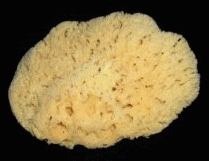
Porifera (literally meaning pore-bearing) is the oldest living animal phylum. They may look like plants but they are multi-cellular aquatic animals. They have no true organs or tissues but are loose groups of cells held together by calcium and silica. This tells us about their basic nature – generally speaking, the more silica in an organism, the less evolved it is [6]. Bodily functions are conducted on a cellular level and via diffusion. Reproduction can either be sexual or (more usually) asexual. The remedy as used in homeopathy is toasted sea sponge (hence the ‘tosta’) – in alchemy it was believed that this process of Calcination increased the power of a substance, a view shared by Hahnemann who did the first proving for Spongia.
To get a feel for the heart of Spongia, it helps to imagine one’s life if you experienced it as a sponge – the structure can help a great deal as a filter but can also feel rather vulnerable, lacking in structure and defence of itself. This issue of a problem with boundaries and over-extension is frequently seen in Spongia patients and they may often be experience problems with co-dependent relationships. The ‘early’ nature of Spongia can be loosely correlated to the primal, early stages of life. The sponge can be likened to the lungs (the filtration) and the problems found within that vital function. Bringing all those things together, one can see that a new baby, recently born and experiencing boundary problems through the lungs and is struggling to breath would be an ideal candidate for Spongia and indeed it is most commonly used in croup and spasmodic coughing. There is also another overriding theme to Spongia – this filtration the sponge is duty bound to perform leads to a bombardment of things coming ‘at’ it and it takes on a contracting and releasing theme/motion as it attempts to deal with everything (both physically and emotionally). This expanding and contracting can be witnessed through the physicals and many of the emotional symptoms of the remedy to the extent that it almost shows polarity for the homeopath from the start. For example – one can see the expansion and contraction in the croup and cough physicals of Spongia as it tries to rid itself and literally filter out mucus. So, too, in the mental and emotional symptoms, one can often find alternating moods as they go through the expansion (almost intoxicated highs and laughter) and contraction (sudden aversion to everything, disgust and suicidal depression). There is dryness to the remedy, which seems odd given the wet environment in which the sponge lives – this in itself though is telling; when in a state of dis-ease the patient experience the opposite of what it really ‘needs’ – in a state of dis-ease, a patient will have a sensation of dryness which causes additional suffering.
The remedy does, of course, treat a whole multitude of symptoms, but it has a major affinity with the respiratory system, lymphatic system, glands, blood vessels and joints. It can also be used to treat shock (especially anxiety linked to respiratory problems – asthma attacks and the like) though clearly it would entirely depend on how it manifested. Some interesting symptoms of the remedy include that the mental symptoms are generally worse for being outside, the patient usually wants to be still and lie down if possible and they often report that their thoughts seem to ‘crowd’ together when they close their eyes. They may also have some issues around immaturity (physically as well as emotionally and mentally) and safety and may often feel ‘heavy’ or flabby (as a sponge over-saturated) in a state of negative pathology.
Saturated and bombarded through the senses, lacking in structure and defence of themselves, Spongia reflects a primal state of survival, struggling to breathe through the mucus.
Corallium Rubrum
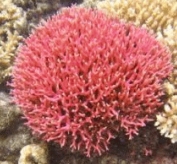
The next remedy, Corallium Rubrum, red coral, is a close relation of the sponge and can possibly thought of as a sponge that has strengthened itself a bit with Calcium. They are however extremely fragile and can lack strength relative to their environment.[7] Hence, Coralluim patients can often appear aggressive and verbally be so, but often are unable or unwilling to back it up with anything physical. All of the Cnidarian remedies are emotionally extremely impulsive, ultra-sensitive, with a tendency to ‘lose their head’.[8] The brittle-ness of the structure gives it an affinity with the skeletal system and issues such as brittle bones and osteoporosis. Like Spongia, it is also an excellent croup, spasmodic cough and catarrh remedy but it brings the additional factor of outward ‘pressure’ manifesting in redness of the face and sometimes nosebleeds. The coral reefs also represent the value of community in survival, and may be chosen if a person with chronic cough also seeks safety through creation of community wherever they move. As with Spongia there is dryness to the remedy or perceived dryness. The coral’s fragility can also be seen in how easily ‘damaged’ the patient may seem – pain is experienced as agonising and they do not deal with change or discomfort well at all. Incidentally, Corallium Rubrum can only grow and thrive in extremely specific settings and circumstances – this is reflected in the Cor-r patient’s fear of pain and inability to deal ‘reasonably’[9] with pain. This fear of being hurt or their environment changed without their knowing can produce the unusual mental delusion that they have been or will be poisoned. In their anger and shrieking about their pain we see the need to be seen and noticed in order to survive that runs as a theme in sea remedies.
If we look at the coral in relation to the doctrine of signatures, we see that when turned upside down it looks not dissimilar to a system of arteries and veins – this reminds us that cor-r patients often bleed easily and it can be used for haemorrhaging. Additionally, the general congestive action associated with the remedy can sometimes mean they discharge emotions via the blood or other discharge. Another feature which can help distinguish the remedy is that they often have very restless sleep – possibly exacerbated by their many fears and superstitions, especially about some inner nothingness or vacuity.
Pained and fragile, and “losing their head” through their blood, Corallium is more social and socially aware in survival, sustained by community and a predictable environment.
Calcarea Carbonica
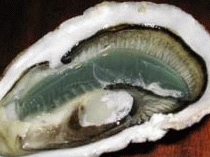
Moving through several evolutionary steps we arrive at gastropods and bivalves – a sub group of marine molluscs – sea shells. The shell itself and the vulnerable body inside it is often mirrored in the patient; the qualities of the shell is a predominant protective feature and can often manifest as defensiveness or a desire to hide information compared with a soft and delicate physical body.[10] They may even want to hide the condition with which they originally visited the doctor or homeopath. The shell remedies are generally based on an attempt to move towards inner spiritual understanding, with Calc Carb being at an early stage of this journey, and there is a polarity at either end of the evolution within the shell remedies based on this. At one end of this scale sits Calcarea Carbonica (Calc or Calc-carb) is made from the middle layer of the oyster shell; at the heart of this remedy is the sea theme of being observed. in that Calc doesn’t want to be observed (hence hiding in its shell); it is impressionable and susceptible to other people’s whims and ideas, just as the oyster is vulnerable, and has many fears.[11]
The primal will to survive associated with the sea is also marked in Calc – their shell is a protective layer providing stability. So, too, many Calc patients need stability in their home and personal life and like to maintain structure and routine. Hence many ailments may commence at times of great change. This leads to many of the Calc delusions pertaining to desire to go home even when they’re already there. It can also make them over-sensitive to things around them and they often lack or don’t want independence. The polarities within the remedy lie within issues such as rigidity and obstinacy versus softness and vulnerability. So, too, their being isolated and alone can make them timid, or conversely make them somewhat egotistical. It has particularly affinity with the musculoskeletal, nervous, cardiovascular, and endocrine systems and especially with the kidneys. In physical symptoms it is often used for digestive problems, dental issues, joint and bone problems and women’s health. There is a general weakness to the remedy or a hidden weakness which often appears to be something else. They may also feel like there is something ‘inside’ them – this reflects the oyster having its shell invaded, being seen and potentially being hurt by an invader. They may fear infectious disease, the pinnacle of something getting ‘in’ them and abscesses and cysts ‘around’ the problem are common. The Calcified nature of the mineral can dictate a hardening of the patient – both physically and emotionally and make them stubborn and fixed in their ideas.
Soft and vulnerable, Calcarea stands malnourished, sluggish and full of fear as it is exposed in its evolutionary path, always ready to scuttle back into a constipated, protected and routine life.
Sepia

The final remedy is Cuttlefish – Sepia Officinalis. Sepia is also a marine mollusc but from the more evolutionary advanced class of cephalopods. It has an internalised shell which is a single, partly hollow chambered bone which gives the creature’s soft body some rigidity; but this increased mobility is at the sacrifice of some level of protection and this conflict can often be seen in Sepia patients. The cuttlefish can move extremely quickly by contracting its muscles and the skin can change colour to disguise or attract (again, the being seen or not being seen sea element). Not only can it change colour to ‘show’ itself as harmful, it also mesmerises prey or communicates with other cuttlefish with its arms/tentacles. When threatened, they will usually eject ink and dart of at speed and the remedy is made from this ink. Interestingly, after mating and laying eggs, the female cuttlefish will cover them in ink and die.
The contradictions which lie within Sepia (safety vs stasis, mobility vs exposure and the structure of the inner ‘bone’ vs being thin skinned) lead to several traits associated with the remedy.[12]
Sepia patients very much want to get away from everything and everyone and yet fear being alone and a lot of what they say may contradict what they do and vice versa. They may also feel contradiction between ‘needing’ to appear attractive but believing they are not and/or not really wanting to be. The animal itself also tells us a lot about the potential patient – it is predominantly a female hormonal remedy, often menopausal during which the patient feels dragged down and wants to dart away. This is not only reflected in their ability and desire to nip away quickly but also in the fact that after birthing, they die as if they are in some way so ‘done’ with everything and it’s all got too much. Everything in their world will feel too much and like an attack on her and they will have strong feelings, possibly even anger about domestic responsibilities become depressed and anxious, often dwelling on the past. In appearance they may have the yellow markings across the face or have a mottled complexion. There’s a languid lethargy about the remedy and they’ll have a sensation of being ‘dragged’ down – emotionally and in their pain. Their dream life may include being chased or falling or having to run backwards. As well as sexual, reproductive and hormonal systems, the remedy can also help the nervous system, auditory, visual, cardiovascular, respiratory and musculoskeletal for a variety of complains both acute and chronic.
More evolutionarily exposed, sexual and communicating, Sepia prefers social camouflage to good circulation, and risks being dragged down and contracting into stasis.
Differentiation
It can be very difficult at times to differentiate between these remedies, especially ones in the same class. For example – Spongia and Cor-r are both extremely similar in their use for croup and any dry spasmodic cough, but as is often the case in homeopathy, one could differentiate them based not on their suffering but on how they deal with and express their suffering. So a patient needing Spongia may very well be extremely agitated and worried about their cough and pain but would probably manifest it in their characteristic alternating manner, in which their emotional state wouldn’t remain the same for very long – they may seem happy and coping with it one minute and not the next. They would also want to be still. Cor-r on the other hand would be very unlikely to take the issue lying down (literally or otherwise) for a single moment and would be agitated by the cough – pressure making them red in the face and their emotions being ‘red’ and vocal/angry also. Often a homeopath can sense the need for a strongly mineralised remedy for long term respiratory issues and Cor-r is always worthy of some consideration when thinking about Calc-carb, especially if the person likes growing a little ‘society’ round them in the way coral wants and needs and in the way Calc, despite its dependence, does not.
Calc has a great deal in common with both Spongia and Cor-r. Both Calc and Spongia could potentially become ‘professional patients’[6] owing to the delicacy and vulnerability and to a child-like, pessimistic approach to ill-health and all pain is likely to be perceived as the beginning of the end. All three of them have a great deal of fear in them. Calc’s hidden-nature and secrecy mark it out though in that they not only have almost a fear OF the fear; they will do absolutely anything to avoid it or face up to it. They are also more organised than the other two in their concreteness and retention – not just wanting to be in the presence of the thing or person on which they’re dependent but further understanding that they need to hoard other things (money etc) – this can often be seen in a reluctance of the body systems to release toxins. Their dependency is on real material things whereas Corrulum is often on a slightly child-like notion of God or some higher power. Spongia may often seem less fearful than Cor-r because it almost has no sense of its weakness or vulnerability as it’s earlier in the scale.
Sepia clearly has different affinities in the body and is moving away from the Calciferous early remedies in the sea creature’s family. It does contain many of the sea remedies themes however – of survival or dealing with life (or getting away from them), emotional life and joy or apathy at that, being seen and not being seen and fight or flight responses to predator/prey relationships in the animal kingdom. One thing which particularly marks Sepia out is their likely response to consolation – they will usually reject and feel worse for it. This is the opposite to the more mineral-based sea creature remedies.
Sepia may be compared to other sea creatures closer to its class but also to remedies from other areas such as Tarantula and Nat-Mur.[13] It’s interesting that both these remedies have something in common with Sepia (Tarantula is still in the Animal kingdom but not in the sea, Nat-Mur is in the sea water itself but is not an animal). Sankaran believes Sepia comes closest to Nat-Mur. I mentioned earlier my own belief that most organisms would ‘absorb’ some of the properties of the environment in which it lives and here we see it in action. Both of the remedies have themes of disappointment in love and body being disfigured but the level of contradiction and dependence differs between the two – Natrum being the far more dependent and Sepia presenting far more contradictions.
Conclusion
To summarise, the world of sea remedies is one fraught with emotion, one’s place in the world, how it copes with that place, and how it survives. There is a great deal more than could be said of the remedies within the sea and how they fit and flow into the fascinating matrix of other remedies in the natural world. It would be interesting to consider a view similar to Scholten’s periodic table. If we take Whales to be the ultimate ‘end’ product of outwardly social sea creatures, could sea remedies with research, fit into a chart based on stages of evolution of these creatures. Certainly there is a great deal of potential work to be done in the domain of the sea but I have attempted to lay out some of the basic foundations of the family.
[1] Evans, Jo, Sea Remedies: Evolution of the Senses, Haarlem, 2009, Page 18
[2] Sankaran, R, Survival: The Mollusc, Mumbai, 2008, Page 17
[3] Possibly due to it being a somewhat under researched area
[4] Evans, Jo, Sea Remedies: Evolution of the Senses, Haarlem, 2009, Page 13
[5] Chosen for two reasons – one being that I want to show both ‘ends’ of the evolution of the sea creatures and the second being that they are probably less known/used than the remedies I have chosen – plus I wanted as many of the remedies as possible to be ones I’ve covered either in college or in clinical practice, a category into which Calc Carb, Sepia and Spongia all fall in.
[6] Mangialavori, M, (noted by Vicky Burley), Notes from the second three year international post-graduate course: Remaining in a Safe Environment: The Sea Remedies, Bologna, Italy, 2002
[7] https://hpathy.com/materia-medica/introduction-to-sea-remedies/
[8] Evans, Jo, Sea Remedies: Evolution of the Senses, Haarlem, 2009, Page 169
[9] Using that word very loosely of course!
[10] Sankaran, R, Survival: The Mollusc, Mumbai, 2008, Page 49
[11] Evans, Jo, Sea Remedies: Evolution of the Senses, Haarlem, 2009, Page 417
[12] https://hpathy.com/materia-medica/introduction-to-sea-remedies/
[14] Sankaran, R, The Soul of Remedies, Mumbai, 2009




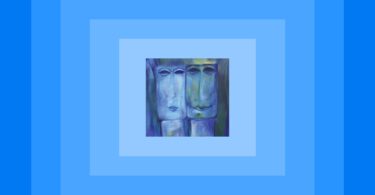
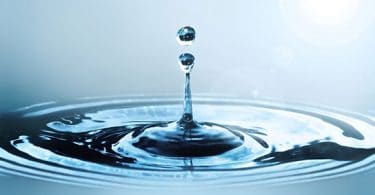
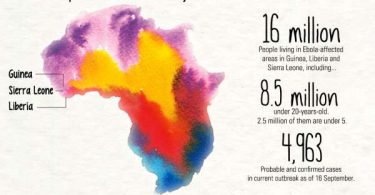
This article is goes into the Theory of Evolution. Which is only a theory not a proven fact. There is the other asspect that we are created, since we are spirit as well as body. If we leave the realm of known facts and go into the unknown, then we base our discussions on halft thruths and end up in a mess. Otherwise the ariticle is good in its differentiation of remedies.
Hi and thanks for the comment. Bear in mind, I am still in fact studying and wrote the piece in second year. I am of the opinion however that the theory of evolution is the most likely of the various ‘truths’ to which you refer since it is the only one thus far with any basis in fact. Certainly the others which I studied in some detail during my Philosophy degree fell and continue to fall apart under scientific scrutiny. There is some evidence for evolution, there is no evidence of creation (or none which holds up to the sort of scientific rigour I would like it to in order to accept it and feel confident enough in it to base my belief system) though there is the concept of faith which is entirely different. It is therefore, admittedly, written with that slant (i.e. my own beliefs or lack thereof). I am less than keen on some of the more intangible elements of homeopathy and I think it is one of the reasons the profession is sometimes taken less seriously by the larger population. It’s a dangerous game to mix medicine with arguements from creation. But that’s merely my opinion. 🙂
the article is a good one for a second year student.regarding the question of theory of evolution it is only partially true.nature creates innumerable forms for its own purpose. nature is also a good artist. a good artist may have no utilitarian purpose guiding his creation. essays on homeopathy psyche&substance by Edward c. whitmont is a good book to read.
natrum mur wants 100 percent reciprocation in love otherwise 4th chakra imbalance heart flutters.sepia strong in putting back gear when sees emotions not reciprocated is slow in putting front gear of relationship so mostly unsocial side as a defensive.spongia best nervous emotional tonic blocks going out of control 4th heart chakra plus strain on lungs.Regards.